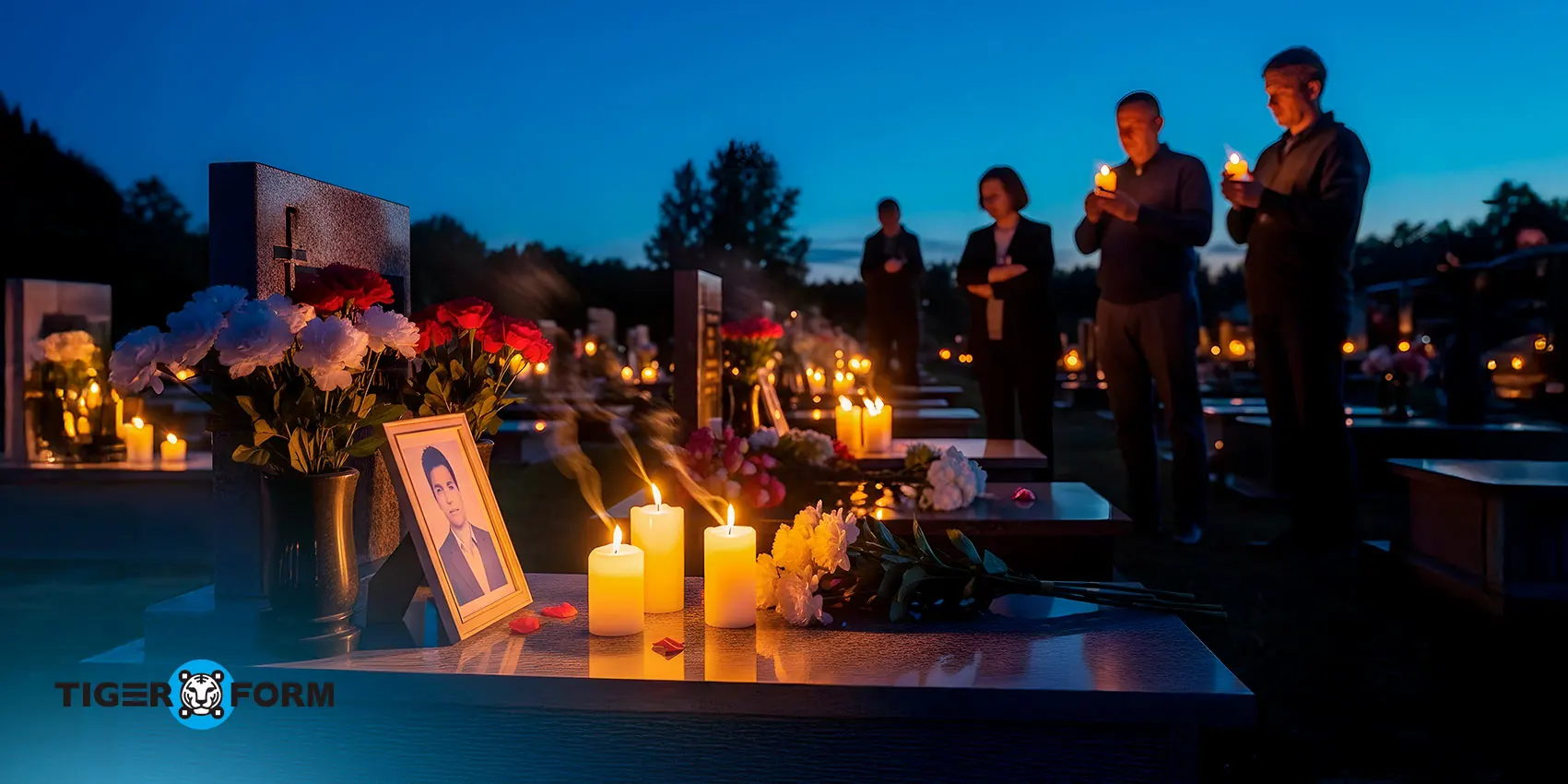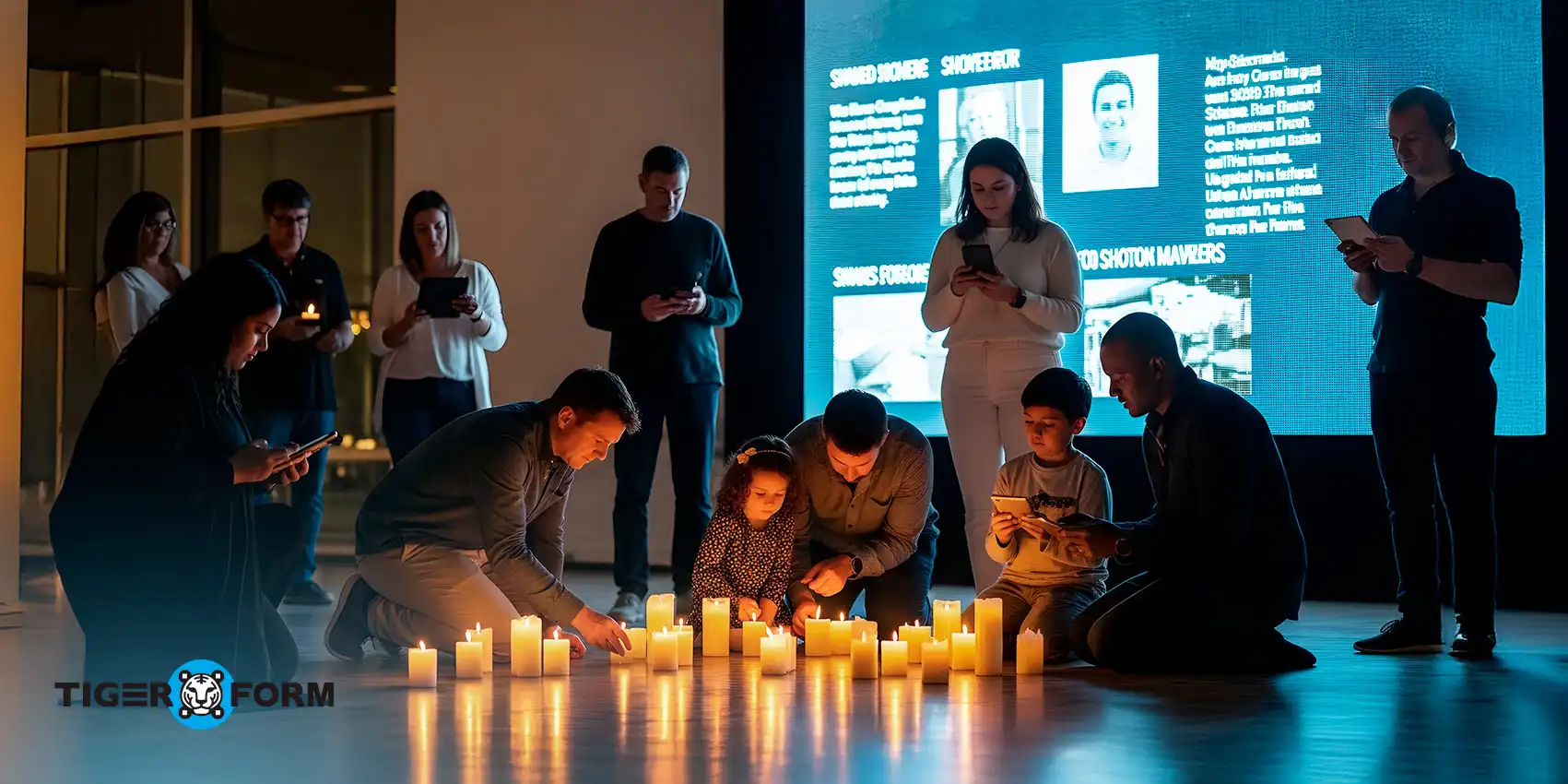
“Eternal rest grant unto them, O Lord, and let perpetual light shine upon them.”
– Requiem Mass Prayer
November 2 is a quiet, reflective day when we pause to remember those who are no longer with us. All Souls Day is about keeping their memory alive, through prayer, candlelight, shared stories, or simple moments of reflection.
In 2025, many are finding gentle, modern ways to observe the day, such as lighting a candle at home, writing a note of remembrance, or even using prayer to include loved ones nearby. It’s not about grand gestures, but about connection, gratitude, and honoring the lives that have shaped ours.
This year, let’s explore meaningful, modern ways to celebrate All Souls Day, keeping prayer and memory at the heart of it all. Also, learn how you can plan your gatherings effortlessly with an event form created using a form builder.
When is All Souls Day, and why do we observe it?
All Souls Day, observed on November 2, is a sacred tradition devoted to praying for the souls of the departed, especially those believed to be in Purgatory, awaiting union with God. The day stems from early Christian practices of offering prayers and masses for the dead, rooted in the belief that love and intercession can transcend death. The custom became widespread after St. Odilo of Cluny established it in the 10th century, and the Church officially recognized it as a day to remember “the faithful departed.”
While All Saints Day (November 1) honors the saints and martyrs who have already reached heaven, All Souls Day focuses on all who have passed away, loved ones, ancestors, and forgotten souls alike, reminding us that remembrance is an act of compassion and faith.
Across Christian traditions, the observance varies in form but not in heart. Catholics attend special Requiem Masses and visit cemeteries to pray and light candles. Anglicans commemorate the departed through solemn liturgies and readings. At the same time, Orthodox Christians hold several memorial Saturdays throughout the year, offering prayers and blessings for those who have fallen asleep in faith.
Time-honored traditions of All Souls Day
All Souls Day is marked by heartfelt traditions that bring faith and memory together. Here are some traditions followed on this special day,
- Attending mass or special church services:
Many people begin the day by joining a Requiem Mass or memorial service, offering prayers for the souls of their departed loved ones. The solemn hymns, the scent of incense, and the collective prayer create a shared moment of peace and remembrance.
- Lighting candles at home or in cemeteries:
The gentle glow of candles symbolizes hope and eternal light. Families light them beside photographs, at home altars, or on graves, believing each flame carries a prayer for those who rest in God’s care.
- Cleaning and decorating graves:
Visiting cemeteries is one of the most tender customs. People clean tombstones, arrange flowers, and leave messages or small tokens. It’s a quiet way of saying, “You are remembered and loved.”
- Preparing and sharing favorite foods:
In many cultures, families cook the favorite dishes of their departed loved ones, sometimes setting aside a portion as an offering. From bread in Europe to pan de muerto in Mexico, food becomes a way to honor and celebrate life beyond death.
Modern event ideas for All Souls Day to unite your community

All Souls Day is a chance to come together as a community bound by faith, memory, and compassion. When people gather to honor the departed, they share stories that heal, connect, and remind everyone that love continues beyond loss.
Here are some modern ways to celebrate the day while keeping everyone engaged, near or far:
1. Memory wall or message tree
Set up a wall, board, or tree where people can pin or hang written messages, prayers, or photos of their loved ones. Encourage participants to read others’ notes, it builds a sense of unity through empathy and understanding. You can also create a digital memory wall form using an online form creator, where participants can submit messages, images, or dedications online. Later, you can display these heartfelt entries on a shared screen or community board during the event, keeping everyone connected in remembrance.
2. Candlelight prayer gathering
Host a simple evening prayer where families bring candles for praying for the dead. Arrange them around a cross or community altar. As the lights glow together, it becomes a quiet yet powerful symbol of shared hope and remembrance.
3. Community mass or interfaith service
Invite neighboring churches or faith groups to join for a collective Mass or memorial service. You can also include a short reflection or discussion on All Souls Day history, reminding everyone why this day of remembrance has been cherished for centuries. Even small interfaith gatherings can show that remembrance transcends denomination and draws people closer in shared humanity.
4. Food and fellowship table
Food has always been part of honoring the departed, from soul cakes to family recipes. Organize a potluck or “Remembrance Meal” where everyone brings a dish that reminds them of someone they’ve lost. Each shared story adds warmth to the table.
5. Acts of charity in memory
Encourage people to perform a small act of kindness, such as donating to a food bank, visiting the sick, or planting a tree in memory of a loved one. Collect these gestures under one community initiative, turning remembrance into living good.
6. Virtual tribute wall
If your community spans distances, create a digital space like an online remembrance form, an online gallery, or a social post where people can upload photos, prayers, or quotes. It’s a simple way to unite hearts even when miles apart.
Create an event form with a form creator for easy and organized planning
Organizing an event or any community gathering can be simple and stress-free with an online form builder like TIGER FORM. Online forms help you efficiently collect participant details, prayer intentions, or RSVPs, while AI-powered features and ready-made templates speed up the process.
Here’s how to get started:
Step 1: Sign in to TIGER FORM
Create an account or log in to your existing TIGER FORM account on desktop or mobile.
Step 2: Choose a form template
Select a form template that fits your community gathering. Templates save time and ensure you include all essential fields.
Step 3: Customize your form
– Add fields for participant names, contact information, prayer intentions, or the number of attendees.
– Mark mandatory fields with an asterisk (*) to ensure no critical information is missed.
– Use AI form generation to automatically suggest additional fields or optimize the form structure based on your event type.
Step 4: Configure event settings
Set submission deadlines, enable reminders, and decide whether responses are private or viewable by other participants.
Step 5: Share your form
Generate a QR code for your form and display it on posters, bulletins, or event invitations, making it easy for attendees to scan and respond instantly from any device. You can also distribute your form QR code via WhatsApp, email, social media, or embed it on your community or church website. Attendees can respond easily from any device.
Step 6: Track responses and organize data
TIGER FORM lets you view responses in real time. You can also export data, sort participant lists, or generate reports to prepare for the event efficiently.
Step 7: Follow up with participants
Send confirmations, reminders, or thank-you messages directly from the form dashboard. Using the collected data, you can ensure every participant feels included and engaged.
Commemorate lost love this All Souls Day
All Souls Day reminds us that memory is a living act, not just a moment on the calendar. It’s an opportunity to remember the lives of those who’ve passed. Beyond lighting candles or visiting graves, we can honor them by nurturing connections, supporting our communities, and sharing stories that inspire future generations.
In this way, this day becomes more than a day of remembrance; it becomes a practice of carrying love, respect, and memory forward every day. Celebrate this time with intention, and plan it effortlessly with an event form built using a form generator so you can focus on remembrance while everything stays beautifully organized.
FAQs
1. What is the difference between All Souls Day and All Saints Day?
All Saints Day honors all the saints in heaven, while this day is dedicated to praying for all faithful departed souls who are still on their journey to heaven.
2. What is All Souls Day in the Bible?
While the Bible doesn’t mention the day directly, its meaning is rooted in biblical teachings about praying for the dead and the hope of resurrection.
3. Why do people light candles on All Souls Day?
Lighting candles on this day symbolizes hope, prayer, and the belief that love continues to shine even after death. Each flame represents a soul remembered and a life never forgotten.
